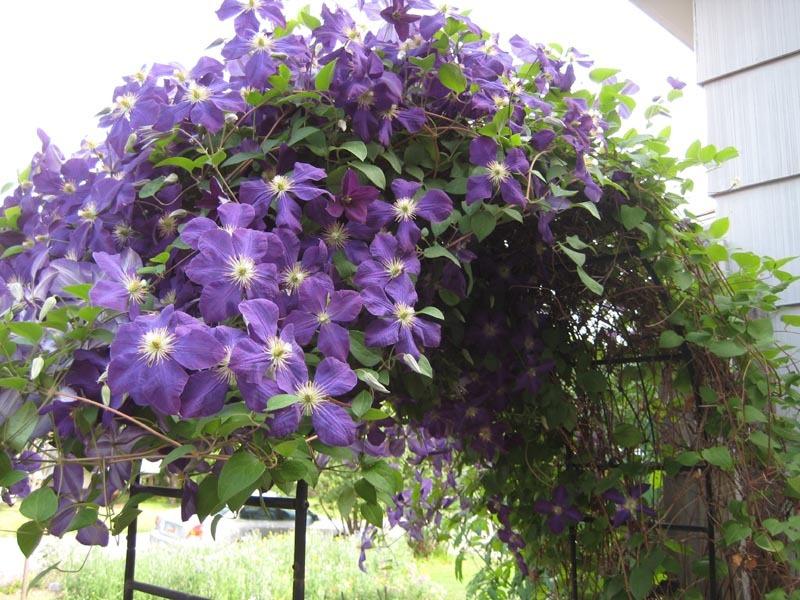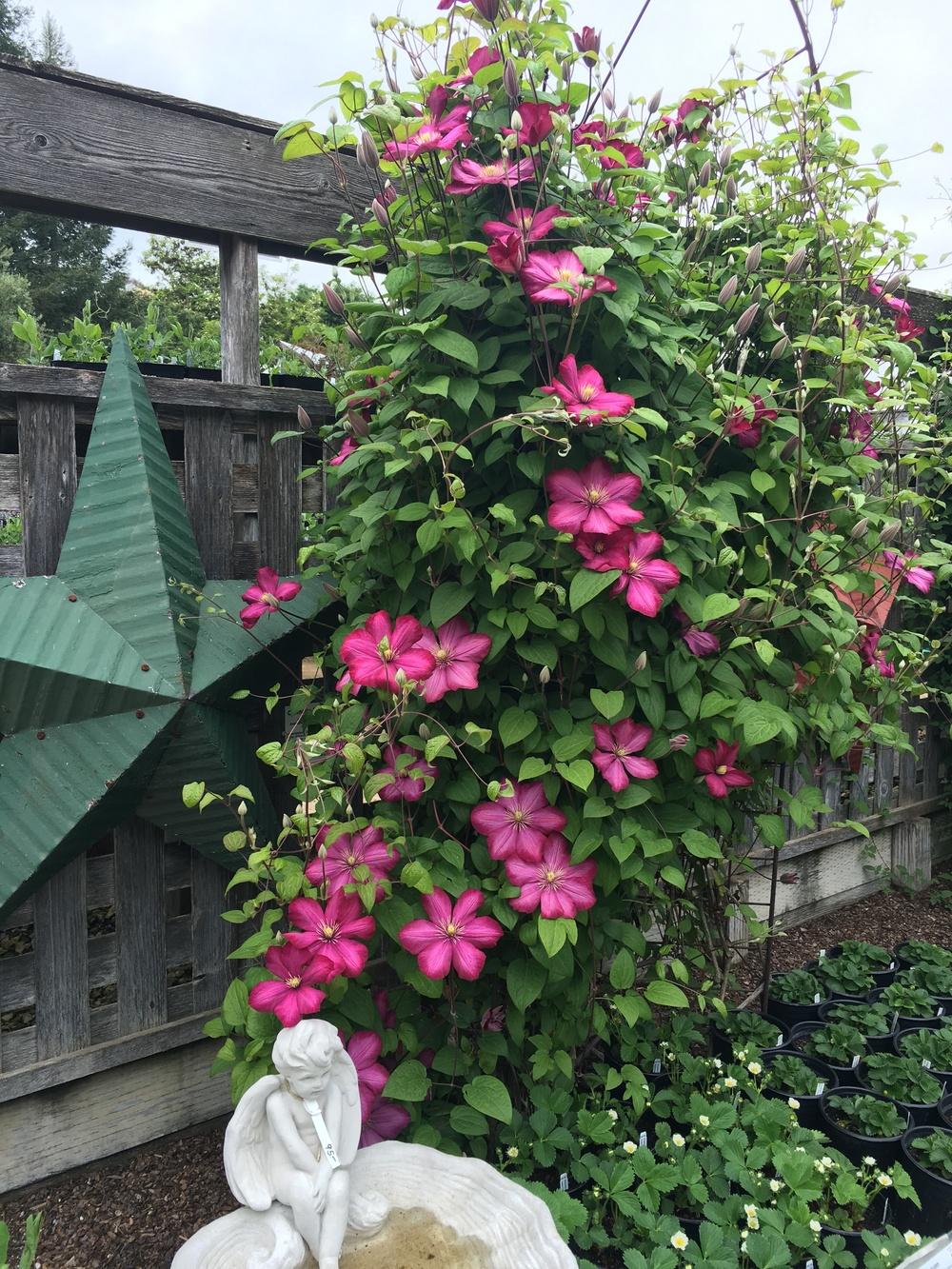Growing plants vertically, on trellises, arbors, or fences, is the perfect marriage of practicality and aesthetics. Practicality, because growing plants "up" can:

Do you want annual or perennial vines? Annual vines die at the end of the growing season, so you can change flower types and colors each year. They tend to grow vigorously, and once they begin to flower they usually continue to do so until frost. They are often lighter in weight than perennial vines, so the support structures don't have to be quite as robust.
Perennial vines may take a year or two to reach the flowering stage, and most have a distinct flowering period of several weeks to a month. Perennial vines that turn woody, such as wisteria, will need very sturdy supports. Most will also need diligent pruning to maximize flower production and, in the case of rampant growers, keep them from running amok. If you are using a trellis for privacy, look for perennial evergreen vines.
Roses are so popular they deserve special mention. If you are looking for roses to adorn a trellis, choose varieties described as "climbers" or "pillars." These produce especially long canes that can be trained to a trellis. Most roses have a distinct bloom period that lasts for several weeks. Some types will continue to flower, albeit less abundantly, until the end of the growing season.

A vine-covered trellis can shade a south-facing porch, making it comfortable even in the heat of summer. Likewise, vines growing up the south side of a building can help keep the interior of the house a little cooler during the summer.
Plants growing on trellises receive better air circulation than those sprawling on the ground, which can help minimize disease problems.
Twiners can wrap around almost anything, but ideally a trellis will have slats less than two inches across. You may need to help the vine find the trellis by tying it loosely to the support to get it started. Plants that climb with tendrils climb best on trellises with narrower slats. If your vine has trouble clinging to the trellis, install mesh netting over the slats. It will be nearly invisible, and give the vine a good foothold.
Climbing roses can be secured to almost any type of support. Use fabric strips to secure the canes so you don't damage them.
Plants to trellis include cucumbers, beans, summer squash, and tomatoes. If you plan to trellis, look for varieties labeled as vining or pole, rather than bush. For tomatoes, look for indeterminate, as opposed to determinate, varieties. Beans, cucumbers, and squash will climb on their own (though you may need to guide the vines to get them started) but tomatoes must be tied to the support. Melons can be trained to a trellis, but you'll have to support developing fruit, so its weight doesn't tear the vine or cause the whole setup to topple.